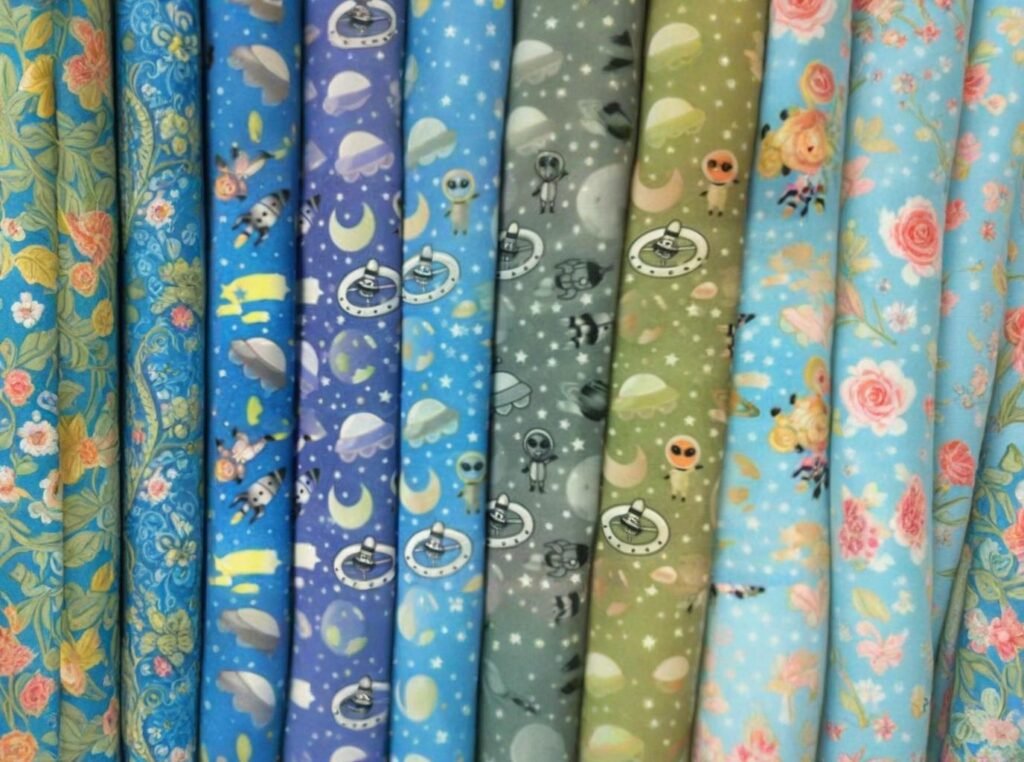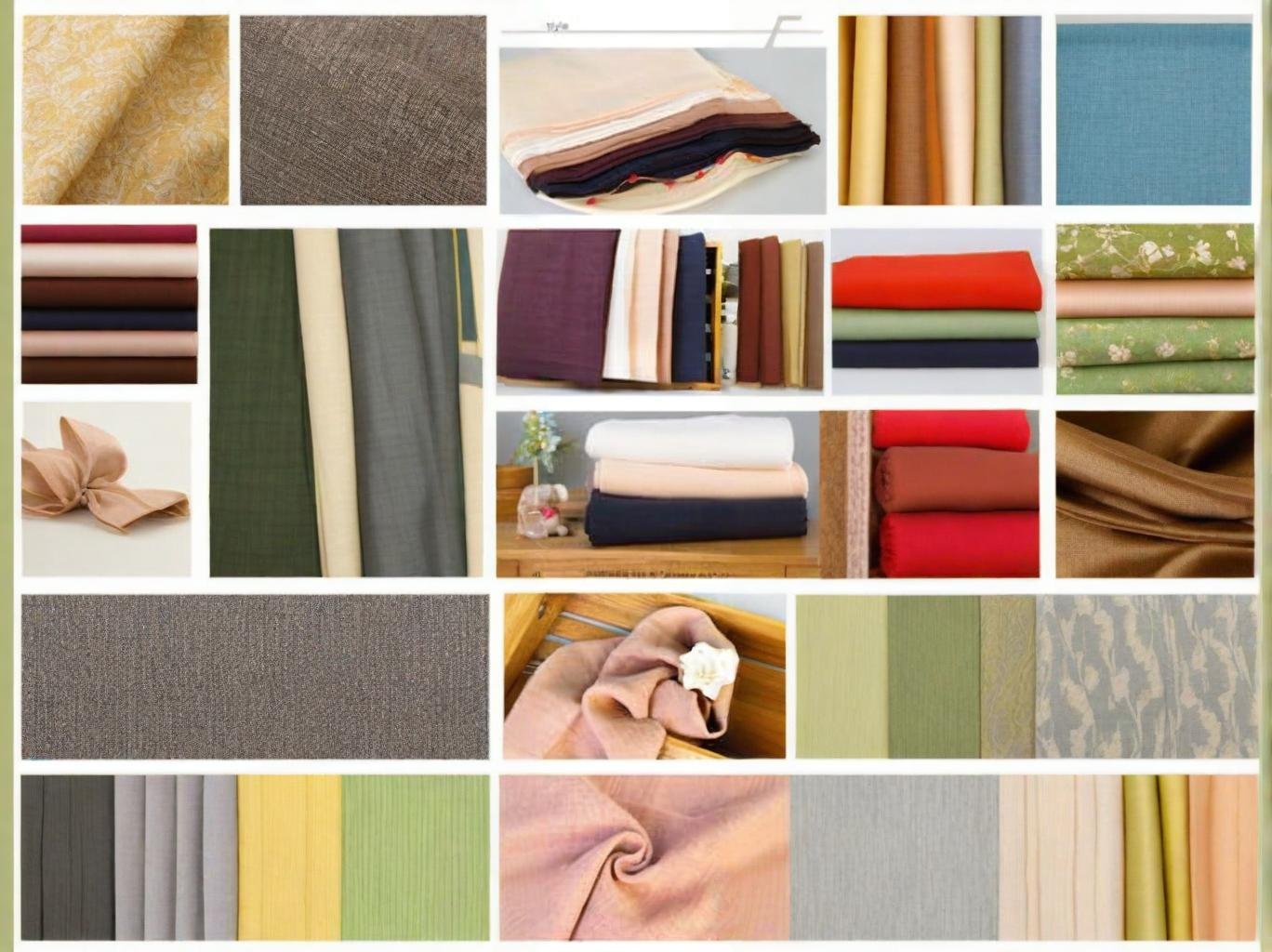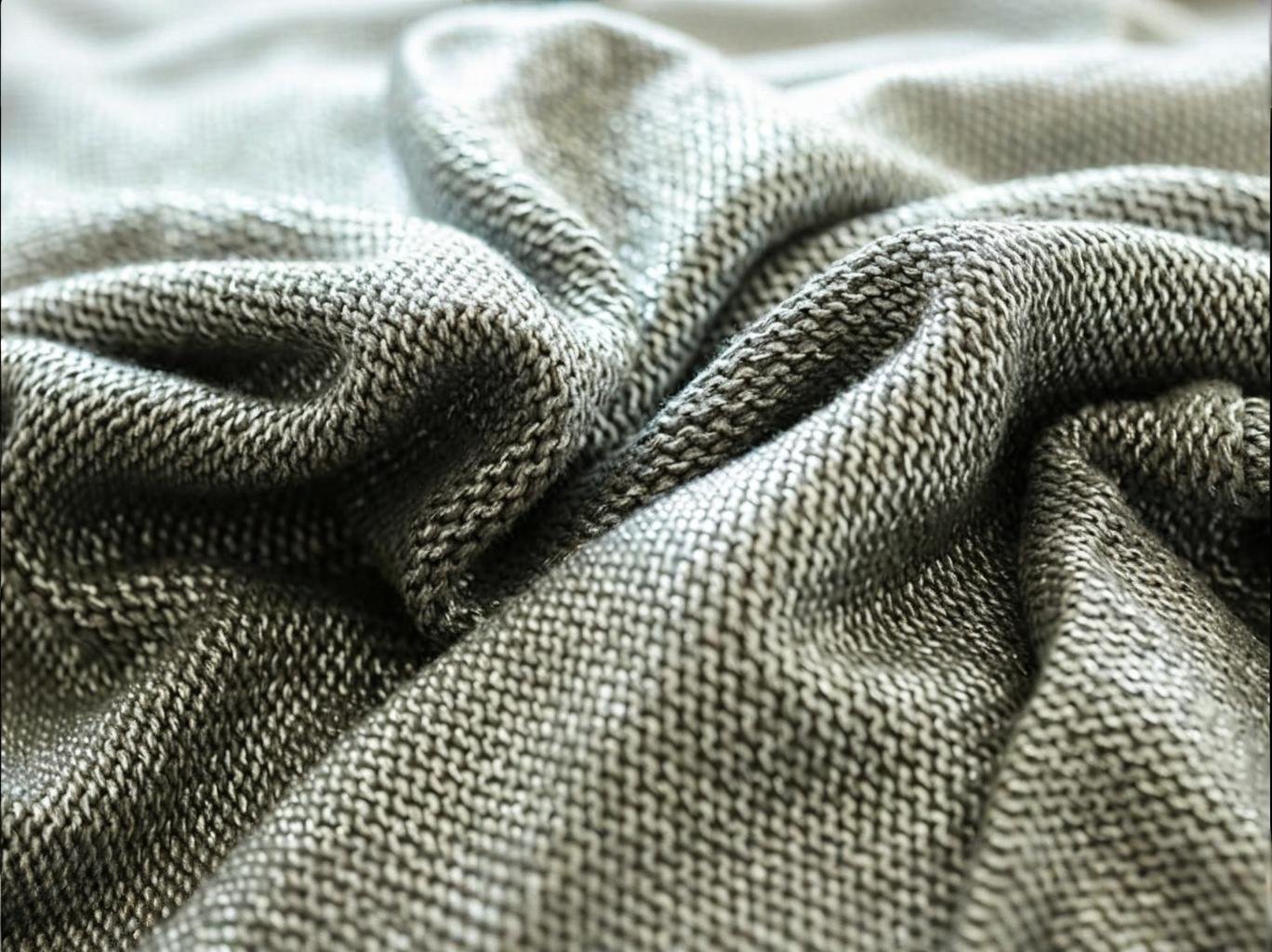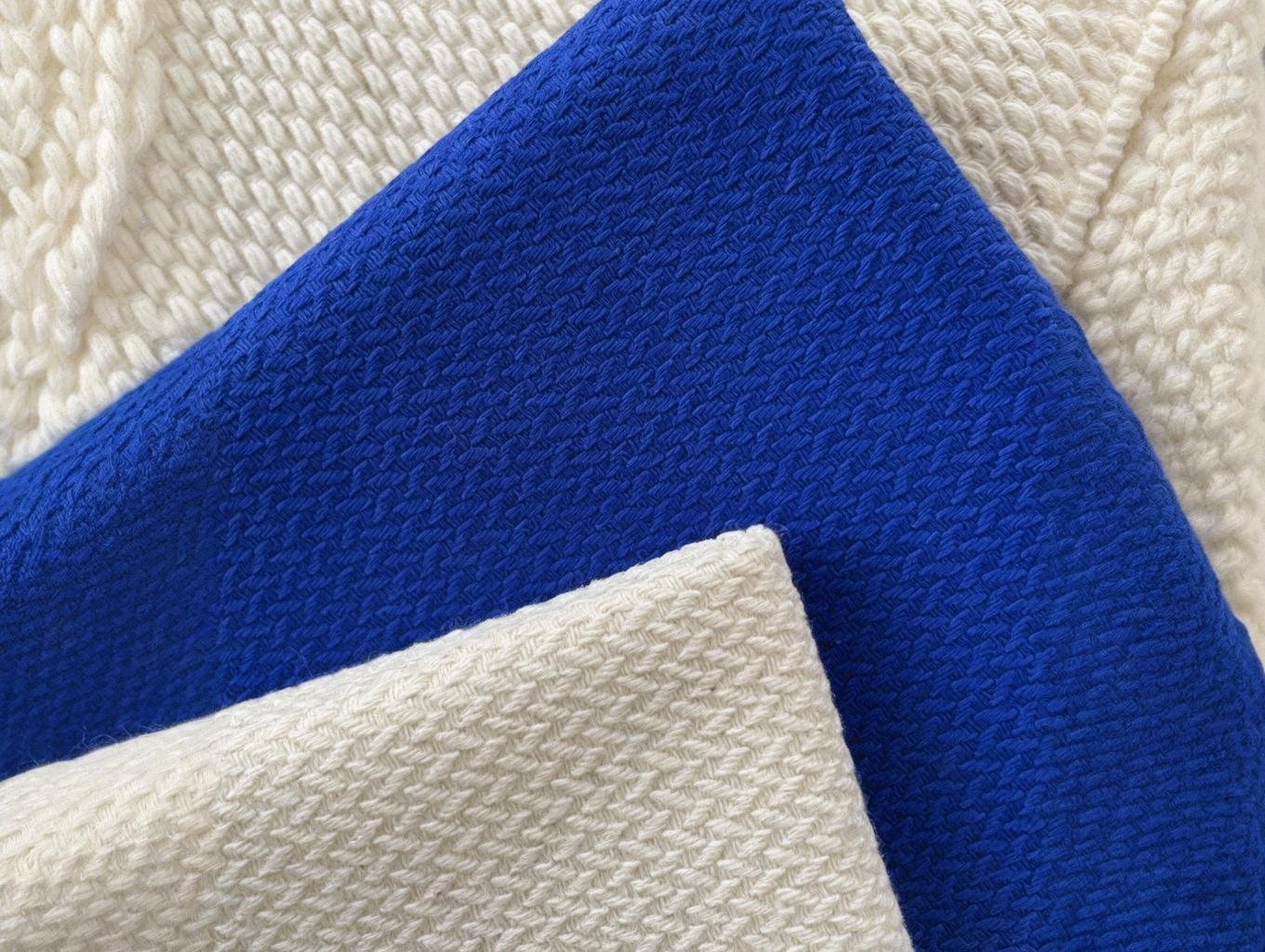Best Uses of Polyester Material in Clothing & Home Textiles

In today’s fast-paced, performance-driven textile market, polyester stands out as a material that meets the demands of both fashion and function. Once viewed as a purely synthetic alternative, polyester has evolved into a sophisticated fiber that can mimic the softness of cotton, the sheen of silk, and the insulation of wool—while offering superior durability and easier care. Whether it’s your favorite moisture-wicking sportswear or elegant wrinkle-free drapes, polyester is likely already woven into the fabric of your everyday life.
Polyester material is widely used in both clothing and home textiles due to its durability, versatility, affordability, and adaptability to various finishes and blends. It offers performance benefits that suit everything from everyday garments to premium furnishings.
Consider this: A global fashion brand recently switched its core T-shirt line from 100% cotton to a 60/40 poly-cotton blend. The results? Faster production, improved shape retention, fewer customer returns, and an average 15% reduction in fabric cost. Meanwhile, a hotel group revamped its curtain collections using textured polyester to cut maintenance time in half without sacrificing luxury appeal.
To understand why polyester is a leading fabric across both wardrobe and interior design, let’s explore its structure, advantages, and strategic use in modern textiles.
1. What Are the Key Properties That Make Polyester Ideal for Clothing and Textiles?
Polyester is known for its strength, wrinkle resistance, quick-drying behavior, and adaptability to treatments like waterproofing or flame retardancy. These properties make it a go-to fiber for high-usage textiles in both apparel and interior spaces.
Core Technical Benefits of Polyester
Key Property Comparison Table
| Property | Benefit in Clothing | Benefit in Home Textiles |
|---|---|---|
| Tensile Strength | Withstands frequent wear and wash | Resists stretching and sagging over time |
| Dimensional Stability | Maintains shape after laundering | Keeps drapes, covers, and upholstery in form |
| Moisture Management | Quick-drying, suitable for sportswear | Helps reduce mildew in humid conditions |
| Wrinkle Resistance | Low maintenance, no ironing needed | Drapes and linens stay smooth post-wash |
| Color Retention | Bright and lasting dyes | Curtains and cushions resist fading |
| Thermoplasticity | Can be pleated or embossed | Adds structure and style to soft furnishings |
Specialized Advantages
- Dye Sublimation Compatibility: The smooth structure of polyester makes it ideal for high-resolution digital prints—used widely in fashion, sports branding, and interior art panels.
- Thermal Behavior: Polyester responds to heat well, allowing easy pleating and sculpting for fashion applications or structured home items like Roman shades.
- Blend Flexibility: It can be mixed with natural fibers to create hybrid fabrics that retain comfort while improving durability.
Industry Example
A uniform manufacturer for the airline industry adopted a 100% polyester crepe weave for cabin crew dresses. The fabric’s wrinkle resistance and clean silhouette were perfect for long-haul flights. Feedback showed that after 50 washes, the fabric still looked freshly pressed—no iron required.
Critical Perspective
- Perceived vs Actual Quality: While polyester’s practical benefits are strong, consumer perception still associates it with “cheap” unless fabric finishes are elevated.
- Touch & Feel Matter: Microfiber, peach-skin, and brushed polyester variants have improved tactile experience, closing the gap with natural fibers in premium segments.
- Lifecycle Performance: Polyester lasts longer, but its end-of-life sustainability depends on recycling strategies—something brands should account for during fabric selection.
2. Which Types of Apparel Use Polyester Fabric Most Effectively?
Polyester is used effectively across multiple apparel categories including activewear, outerwear, uniforms, swimwear, linings, and promotional clothing. Its durability, low absorbency, and ease of maintenance make it particularly valuable in garments subjected to frequent use, movement, or washing.
Polyester Applications by Apparel Category
Apparel Use Matrix
| Apparel Category | Polyester Benefits | Common Constructions |
|---|---|---|
| Activewear | Wicks sweat, lightweight, stretch-compatible | Knits, mesh, spandex blends |
| Outerwear | Water-resistant, windproof, quick-dry | Ripstop, microfleece, taslan |
| Work Uniforms | Stain-resistant, wrinkle-free, colorfast | Twill, dobby, oxford blends |
| Swimwear & Lingerie | Chlorine resistance, shape retention, elasticity | Spandex blends, microfiber |
| Casualwear | Fade-resistant, easy-care | Poly-cotton jersey, interlock knit |
| Formalwear | Drapes well, holds pleats, sheen | Satin, chiffon, crepe |
| Printed Apparel | Sublimation printing compatibility | Woven or knit white polyester base |
Real-World Insight
A U.S.-based sportswear startup launched a line of 100% recycled polyester yoga sets, leveraging sublimation printing for vibrant custom designs. Customer reviews emphasized the soft feel, print clarity, and fast-drying performance. Over 70% of buyers made repeat purchases within six months.
Additional Benefits
- Thermal Bonding in Seamless Apparel: Polyester’s ability to melt and fuse during production makes it ideal for seamless garment manufacturing.
- Stretch Management: When blended with spandex or elastane, it forms high-performance compression wear for athletics and recovery garments.
- Low Maintenance in Uniforms: Hotel, restaurant, and delivery staff benefit from low-wrinkle, low-shrink polyester fabrics that retain a clean look throughout long shifts.
Critical Perspective
- Odor Retention: Without antimicrobial finishes, polyester may trap body odors more than natural fibers. High-end uses often include silver or zinc-based treatments.
- Heat Sensitivity: It can melt under high ironing temperatures. Care labels and consumer education are essential.
- Blending Required for Comfort: In high-end fashion or base layers, polyester is often blended with cotton, viscose, or bamboo to soften the hand feel while retaining shape.
3. How Is Polyester Used in Home Textiles Like Curtains, Upholstery, and Bedding?
Polyester is widely used in home textiles such as curtains, upholstery, and bedding due to its dimensional stability, resistance to shrinkage, ease of dyeing, and long-lasting appearance. These properties help maintain the aesthetic and functional performance of interior fabrics under daily use.
Applications Across Home Textile Categories
Home Textile Performance Chart
| Application Area | Key Benefits of Polyester | Common Fabric Types |
|---|---|---|
| Curtains & Drapes | Excellent drape, UV resistance, wrinkle resistance | Voile, blackout polyester, satin |
| Upholstery | Abrasion resistance, stain resistance, color retention | Woven jacquard, faux suede |
| Bedding | Soft feel (with microfiber), hypoallergenic, affordable | Microfiber, brushed polyester |
| Cushions & Throws | Durable, easy-care, rich color palette | Fleece, poly chenille |
| Rugs & Mats | Resilience to foot traffic, mold resistance | PET pile, woven poly |
Real-World Example
A hotel renovation project in Singapore replaced their natural cotton blackout curtains with polyester-based triple-layer blackout fabric. The result was 30% lower cleaning cost, 40% better light-blocking, and no shrinkage even after 100+ industrial washes. Guest satisfaction increased due to better sleep quality in rooms.
Additional Benefits
- Allergen Resistance: Unlike wool or natural cotton, polyester is less likely to trap allergens such as dust mites and pollen, which is crucial for mattresses, pillows, and allergy-friendly bedding.
- UV Fastness: Polyester resists fading when exposed to direct sunlight, making it ideal for curtain linings and sofa covers placed near windows.
- Moisture Management: Quick-dry polyester materials are ideal for humid environments or areas like bathrooms and coastal homes.
Critical Perspective
- Plastic Feel in Cheap Grades: Lower-quality polyester can feel stiff or plastic-like. This perception is resolved with finishing treatments like brushing, peaching, or texturizing.
- Sustainability Debate: Home textiles are often replaced less frequently than clothing. Using recycled polyester (rPET) in these applications can dramatically reduce environmental footprint while offering long lifespan.
Design Tip
For soft furnishings with a premium feel, consider polyester velvet or chenille. They offer plush textures and high visual appeal while remaining more affordable and durable than silk or pure cotton options.
4. Which Polyester Blends Enhance Fabric Performance for Clothing and Interiors?
Blending polyester with natural or synthetic fibers can significantly enhance the comfort, look, and functionality of the fabric. Popular blends such as poly-cotton, poly-viscose, and poly-linen are used to improve breathability, drape, softness, or cost-effectiveness depending on the application.
Common Polyester Blends and Their Benefits
Blended Fabric Comparison Table
| Blend Type | Common Ratio | Strengths | Typical Use Cases |
|---|---|---|---|
| Poly-Cotton | 65/35 or 50/50 | Softness of cotton + wrinkle resistance of poly | T-shirts, uniforms, bed sheets |
| Poly-Viscose | 70/30 | Drapability + vibrant dyeing | Suits, blouses, formalwear linings |
| Poly-Linen | 60/40 | Texture + crease resistance | Tablecloths, dresses, curtains |
| Poly-Wool | 55/45 | Warmth + easy care | Coats, uniforms, tailored trousers |
| Poly-Spandex | 90/10 or 95/5 | Stretchability + shape retention | Leggings, athleticwear, lingerie |
| Poly-Bamboo | 60/40 | Eco softness + added durability | Towels, baby wear, undergarments |
Real-World Insight
A high-end fashion brand introduced poly-viscose suiting for their summer formalwear collection. Customers loved the drape and softness, while tailors praised its wrinkle-free quality. Return rates dropped by 18% compared to their prior viscose-only line.
Additional Discussion Points
- Cost Efficiency: Polyester blending helps reduce material costs while maintaining desired textile behavior.
- Shrinkage Control: Pure cotton fabrics can shrink after washing, but adding polyester stabilizes the shape.
- Fabric Lifespan: Poly blends often outlast their 100% natural counterparts in terms of wear resistance and fading.
Critical Viewpoint
- Blend Transparency: It’s essential to label fabric compositions clearly. Some consumers are sensitive to synthetics and expect honesty in marketing.
- Performance Trade-Offs: Adding polyester improves care performance but may reduce breathability. Therefore, blends should match the end-use environment.
Sourcing Tip
When sourcing poly blends, test GSM (grams per square meter) and fabric weave density alongside blend ratio. A 150 GSM poly-cotton knit behaves very differently from a 250 GSM woven poplin, even with the same fiber content.
5. Is Recycled Polyester a Good Option for Sustainable Fashion and Interior Brands?
Recycled polyester, commonly referred to as rPET, is increasingly embraced by sustainable fashion and home textile brands as a practical way to reduce environmental impact without sacrificing performance or affordability. By repurposing plastic waste—often from discarded bottles—rPET significantly lowers reliance on virgin petroleum-based raw materials.
Sustainability Benefits and Challenges of rPET
rPET vs Virgin Polyester Environmental Comparison
| Environmental Factor | Virgin Polyester | Recycled Polyester (rPET) |
|---|---|---|
| Raw Material Source | Fossil fuel petroleum | Post-consumer plastic waste |
| Energy Consumption | High | 33%-53% lower than virgin |
| CO₂ Emissions | High | 30%-40% lower |
| Water Usage | Moderate | Lower |
| End-of-Life Biodegradability | No | No |
| Market Availability | High | Growing rapidly |
Industry Case Studies
- Patagonia’s rPET Use: Patagonia pioneered rPET adoption in activewear. Their fleece jackets are made from 100% recycled polyester, helping divert millions of plastic bottles from landfills.
- H&M Conscious Collection: H&M’s Conscious line features extensive use of rPET in fashion and home textiles, offering affordable sustainability at scale.
- Interior Design Brands: European textile manufacturers are integrating rPET into upholstery fabrics, curtains, and cushion covers, balancing luxury feel with eco-friendly credentials.
Critical Perspective
- Material Quality Variation: rPET quality depends on sorting and processing technologies. Some lower-grade rPET may have impurities affecting fabric feel or color consistency.
- Recycling Challenges: Blended fabrics containing rPET and natural fibers are harder to recycle, limiting closed-loop sustainability.
- Consumer Perception: Transparency around rPET content and certification (e.g., GRS) builds consumer trust and brand differentiation.
6. What Are the Common Finishes and Treatments Applied to Polyester Textiles?
Polyester fabrics are often enhanced with functional finishes to boost properties like water repellency, UV protection, anti-microbial performance, and flame retardancy. These treatments expand polyester’s applicability across demanding clothing and interior textile markets.
Popular Finishes and Their Functions
| Finish Type | Purpose | Typical Application Areas |
|---|---|---|
| Durable Water Repellent (DWR) | Water resistance and repellency | Outdoor wear, umbrellas, tents |
| Anti-Microbial | Inhibits bacterial and fungal growth | Activewear, medical textiles |
| Flame Retardant (FR) | Reduces flammability | Uniforms, upholstery, curtains |
| UV Protection | Blocks ultraviolet rays | Swimwear, outdoor furniture fabrics |
| Wrinkle-Free | Minimizes creases | Office wear, hotel linens |
| Anti-Static | Reduces static electricity | Electronics textile components |
| Soil & Stain Release | Eases cleaning | Hospitality, workwear |
| Softening | Improves hand feel and drape | Fashion fabrics, upholstery |
Application Insights
- Outdoor Gear: Jackets and backpacks often combine DWR and anti-microbial finishes for all-weather durability.
- Healthcare Textiles: Anti-microbial polyester fabrics are crucial in scrubs, bedding, and gowns to reduce infection risk.
- Home Furnishing: Flame retardant treatments meet strict safety standards in curtains and upholstery for public spaces like hotels and hospitals.
Critical Perspective
- Finish Longevity: Many treatments degrade over time or after repeated washing, necessitating care label instructions and potential retreatment.
- Environmental Impact of Finishes: Some chemical finishes may carry environmental or health concerns; brands are increasingly seeking safer, eco-certified alternatives.
- Fabric Feel vs Function: Over-finishing can alter polyester’s natural hand feel, so balance between performance and comfort is essential.
7. Are There Any Limitations of Polyester in Clothing or Home Applications?
While polyester offers many advantages, it does have some limitations that buyers and designers should consider. These include environmental concerns, breathability issues, and potential discomfort if not properly blended or finished.
Understanding Polyester’s Drawbacks
Common Limitations Table
| Limitation | Description | Impact on Use |
|---|---|---|
| Environmental Impact | Derived from non-renewable fossil fuels, non-biodegradable | Raises sustainability concerns for eco-conscious brands |
| Breathability | Less breathable than natural fibers | Can cause discomfort in hot or humid conditions |
| Static Electricity | Prone to static buildup | Can cause cling and dust attraction |
| Odor Retention | Can trap odors if untreated | Requires anti-microbial finishes for activewear |
| Heat Sensitivity | Melts or deforms under high heat | Careful washing and ironing required |
| Fabric Feel | Can feel less natural or plasticky in lower-quality grades | May reduce consumer appeal without proper finishing |
Real-World Example
An outdoor clothing brand initially used 100% polyester jackets but received feedback regarding lack of breathability and heat discomfort during active use. They addressed this by introducing mesh paneling and blended polyester-spandex fabrics to improve airflow and stretch, significantly enhancing wearer comfort.
Critical Perspective
- Balancing Act: The key to overcoming polyester’s limitations often lies in blending, finishing, and garment design rather than fabric choice alone.
- Consumer Education: Transparent communication about care instructions and fabric benefits can improve user satisfaction.
- Environmental Responsibility: Investment in recycled polyester and closed-loop recycling is vital for long-term industry sustainability.
8. How Should Buyers Choose the Right Polyester Fabric for Specific End-Use Needs?
Choosing the right polyester fabric requires assessing the end-use environment, performance requirements, desired aesthetics, and sustainability goals. A systematic approach helps avoid costly missteps and ensures the final product meets expectations.
Buyer’s Fabric Selection Framework
| Selection Criterion | Considerations | Example |
|---|---|---|
| End-Use Environment | Indoor vs. outdoor, exposure to moisture, abrasion | Outdoor sportswear needs waterproofing |
| Performance Needs | Durability, stretch, UV resistance, antimicrobial properties | Medical scrubs require anti-microbial fabric |
| Fabric Weight (GSM) | Lightweight for summer, heavyweight for insulation | Heavy upholstery fabric vs. light curtains |
| Aesthetic & Texture | Smooth, matte, glossy, brushed, knit, woven | Velvet-like upholstery vs. shiny activewear |
| Sustainability Goals | Virgin vs. recycled polyester, certifications | Use GRS-certified rPET for eco-conscious products |
| Care & Maintenance | Washing, drying, ironing requirements | Uniforms requiring easy care and wrinkle resistance |
| Cost Constraints | Budget per yard/kilo, total lifecycle cost | Balancing initial cost with longevity |
Practical Buyer Tips
- Request Physical Samples: Always test fabric samples for colorfastness, hand feel, and durability before ordering in bulk.
- Specify Certifications: Request OEKO-TEX, GRS, or Bluesign certifications to ensure safe chemical use and sustainable sourcing.
- Partner with Experienced Suppliers: Factories like SzoneierFabrics offer customized blends, finishes, and technical support to tailor polyester fabrics to your exact needs.
Case Study
A luxury hotel chain in Europe selected a heavyweight brushed polyester fabric for their curtains after testing several options. The fabric met strict fire retardant standards, resisted UV fading, and reduced cleaning frequency by 25%, saving operational costs annually.
Polyester’s Versatility Makes It a Textile Powerhouse
From high-performance sportswear to elegant home furnishings, polyester’s combination of durability, cost-effectiveness, and adaptability has made it indispensable in modern textiles. Understanding its properties, applications, and limitations is key to leveraging this fiber for innovative and sustainable products.
Ready to explore polyester fabric options tailored to your needs?SzoneierFabrics specializes in high-quality polyester textiles with customizable blends, finishes, and certifications. With low MOQs, fast sampling, and expert technical guidance, we help brands and manufacturers bring their ideas to life efficiently and responsibly.
Contact us today at info@szoneierfabrics.com or visit www.szoneierfabrics.com to start your polyester fabric sourcing journey.
polyester fabric uses, polyester material applications, best uses of polyester, polyester in clothing, polyester home textiles, polyester fabric properties, polyester fabric for apparel, polyester fabric for upholstery, polyester blend fabrics, recycled polyester fabric, rPET textiles, sustainable polyester options, polyester fabric durability, polyester fabric care, polyester fabric finishing, moisture wicking polyester, wrinkle resistant polyester fabric, polyester fabric for curtains, polyester fabric for bedding, polyester fabric for uniforms, polyester textile industry, polyester fabric suppliers, polyester fabric for activewear, polyester fabric printing, polyester fabric types, polyester fabric for fashion, eco friendly polyester fabric, polyester fabric blends, polyester fabric for home decor, polyester fabric maintenance
Can't find the answers?
No worries, please contact us and we will answer all the questions you have during the whole process of bag customization.
Make A Sample First?
If you have your own artwork, logo design files, or just an idea,please provide details about your project requirements, including preferred fabric, color, and customization options,we’re excited to assist you in bringing your bespoke bag designs to life through our sample production process.



